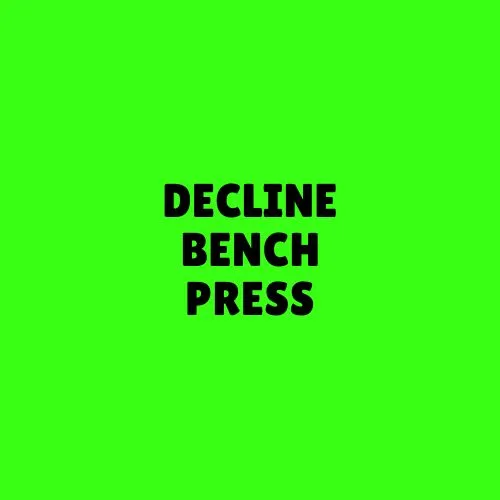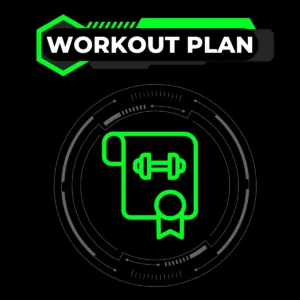Introduction
Want to forge a chest that turns heads? The decline bench press is your secret weapon for attacking the often-neglected lower pectorals. This inverted cousin of the classic barbell bench press lets you move serious iron while minimizing shoulder strain. As Arnold Schwarzenegger once said:
‘The last three or four reps is what makes the muscle grow. This area of pain divides a champion from someone who is not a champion.’
Whether you’re chasing powerlifting numbers or sculpting a Greek-god physique, mastering this movement belongs in your Exercise Library arsenal.
Exercise Review
| Target Muscle Group | Chest (Lower Pectorals) |
|---|---|
| Exercise Type | Strength, Hypertrophy |
| Equipment Needed | Barbell, Decline Bench |
| Force Type | Push |
| Training Level | Intermediate to Advanced |
| Supporting Muscles | Triceps, Front Delts |
| Mechanics | Compound |
| Primary Focus | Muscle Development, Strength Gains |
| Typical Duration | 45-60 seconds per set |
| Variation Options | Dumbbell, Close-Grip, Paused Reps |
Primary Muscle Groups Worked
The decline bench press specifically targets your lower pectoralis major like no other barbell movement. When you angle your torso downward, you create superior mechanical advantage for hammering those stubborn lower chest fibers that give your pecs that coveted ‘armor plate’ appearance. Research from the Journal of Strength and Conditioning confirms decline presses activate 15% more lower pec fibers compared to flat bench variations.
This compound lift doesn’t just build raw power – it creates functional strength that translates to real-world movements like pushing yourself up from inclined positions. Using the best decline weight bench with proper pad angle (15-30 degrees) ensures optimal muscle recruitment without compromising shoulder health.
Secondary Muscle Groups Engaged
Your triceps become major players as you lock out each rep, while front delts stabilize the weight through the pressing motion. Serratus anterior muscles fire hard to keep your shoulder blades stable against the bench, developing those ‘finger-like’ muscle projections that scream athleticism. Even your core works overtime to prevent arching – making this more than just a chest exercise.
For complete chest development, pair this with chest-focused exercises from different angles. The combination of decline press and incline dumbbell work creates 360-degree muscle stimulation.
Instructions
1. Set your decline bench to 15-30° and load a barbell with collars. Plant your feet firmly under the pads.
2. Grip the bar slightly wider than shoulder-width, retract shoulder blades
3. Unrack with straight arms, lower to lower chest while maintaining wrist alignment
4. Press explosively without bouncing off your sternum
5. Squeeze pecs at lockout before repeating
Pro Tip: Use the best decline bench with secure foot anchors to prevent sliding. Start light – the angled position allows heavier weights than flat bench, but ego lifting here invites injury.
Benefits
The barbell bench press variation shines for lifters needing shoulder-friendly chest development. Since your arms move in a more natural pressing path, you reduce anterior deltoid strain while maximizing pec activation. This angle also decreases range of motion compared to flat bench, letting you handle 10-15% more weight safely when chasing progressive overload.
For athletes, the decline position mimics explosive pushing motions needed in sports like football line play or wrestling shots. Incorporating pause reps or tempo variations builds explosive power that carries over to other training programs.
Variations
1. Dumbbell Decline Press: Increases range of motion and addresses muscular imbalances
2. Close-Grip Decline: Shifts emphasis to triceps and inner chest
3. Reverse-Grip Decline: Alters muscle recruitment pattern for new growth
4. Chain/Resistance Band: Accommodating resistance for power development
Mix these into your barbell training split every 4-6 weeks to prevent plateaus.
Common Mistakes
• Bouncing the Bar: Uses momentum instead of muscle control – recipe for torn pecs
• Overarching Lower Back: Keep glutes and core engaged throughout
• Flared Elbows: Maintain 45° elbow angle to protect shoulders
• Partial Range: Lower until bar touches lower sternum for full activation
The ACE Fitness Exercise Library recommends starting with 3 sets of 8-12 reps using controlled tempos.
Safety and Precautions
Always use a spotter or safety arms – the decline position makes bailing dangerous. Wrap thumbs around the bar (no suicide grip) and warm up thoroughly with dynamic stretches. If using heavy loads, consider a lifting belt to maintain intra-abdominal pressure. Those with existing shoulder issues should consult a physical therapist before attempting heavy decline work.
Equipment Needed
Invest in a quality best decline bench with adjustable back pad (15-30° decline), sturdy foot rollers, and non-slip padding. Olympic barbells with aggressive knurling help maintain grip during high-intensity sets. For home gym warriors, pair with a power rack featuring adjustable safeties.
Alternative Exercises
1. Decline Dumbbell Press for increased range of motion
2. Incline Bench Press for upper chest development
3. Chest Dips for bodyweight mastery
4. Flat Bench Press for overall chest mass
Other Names
• Decline Barbell Press
• Downward Angle Bench Press
• Lower Chest Press
Conclusion
The decline bench press isn’t just another chest exercise – it’s your ticket to complete pectoral development. By targeting the lower fibers often neglected in standard pressing, you’ll build a chest that’s both powerful and aesthetically balanced. Remember: Strength is earned through consistent, intelligent training. Use our fitness calculators to track progress and push past plateaus.
FAQ
How often should I do decline bench press?
Include it 1-2x weekly in your chest workouts, allowing 48hrs recovery between sessions. Pair with incline presses for balanced development.
Can beginners try this exercise?
Yes, but master flat bench mechanics first. Start with light weights – the decline angle can feel unfamiliar initially.
What’s better for chest growth – flat or decline bench?
According to NSCA studies, decline bench activates lower pecs better, while flat works overall mass. Use both in your program.
Should I go heavier on decline than flat bench?
While possible due to reduced ROM, prioritize controlled form over weight. Progressive overload should be gradual.



